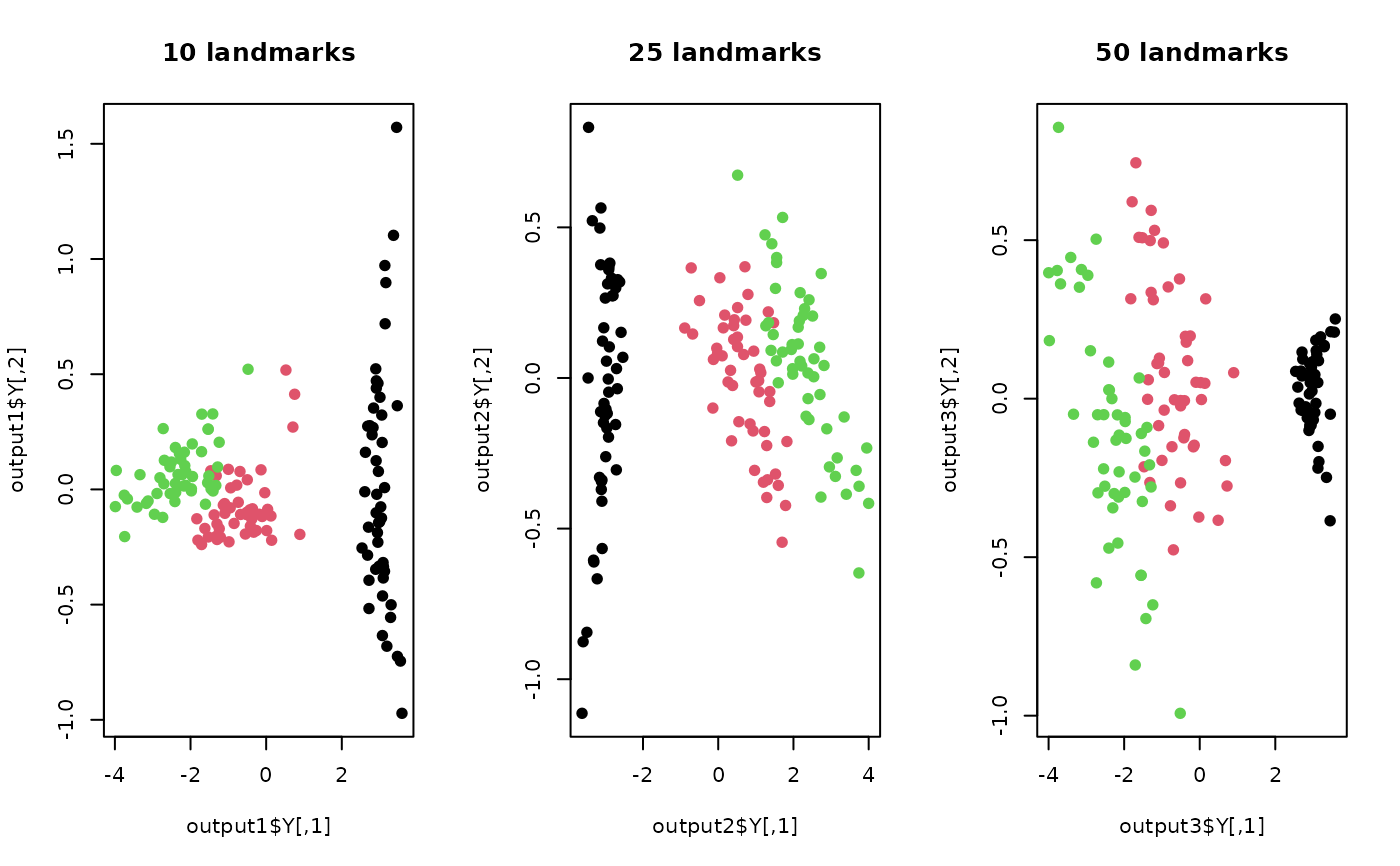Landmark Isomap is a variant of Isomap in that it first finds a low-dimensional embedding using a small portion of given dataset and graft the others in a manner to preserve as much pairwise distance from all the other data points to landmark points as possible.
Arguments
- X
an \((n\times p)\) matrix or data frame whose rows are observations and columns represent independent variables.
- ndim
an integer-valued target dimension.
- ltype
on how to select landmark points, either
"random"or"MaxMin".- npoints
the number of landmark points to be drawn.
- preprocess
an option for preprocessing the data. Default is "center". See also
aux.preprocessfor more details.- type
a vector of neighborhood graph construction. Following types are supported;
c("knn",k),c("enn",radius), andc("proportion",ratio). Default isc("proportion",0.1), connecting about 1/10 of nearest data points among all data points. See alsoaux.graphnbdfor more details.- symmetric
one of
"intersect","union"or"asymmetric"is supported. Default is"union". See alsoaux.graphnbdfor more details.- weight
TRUEto perform Landmark Isomap on weighted graph, orFALSEotherwise.
Value
a named list containing
- Y
an \((n\times ndim)\) matrix whose rows are embedded observations.
- trfinfo
a list containing information for out-of-sample prediction.
References
Silva VD, Tenenbaum JB (2003). “Global Versus Local Methods in Nonlinear Dimensionality Reduction.” In Becker S, Thrun S, Obermayer K (eds.), Advances in Neural Information Processing Systems 15, 721--728. MIT Press.
See also
Examples
# \donttest{
## use iris data
data(iris)
X <- as.matrix(iris[,1:4])
lab <- as.factor(iris[,5])
## use different number of data points as landmarks
output1 <- do.lisomap(X, npoints=10, type=c("proportion",0.25))
output2 <- do.lisomap(X, npoints=25, type=c("proportion",0.25))
output3 <- do.lisomap(X, npoints=50, type=c("proportion",0.25))
## visualize three different projections
opar <- par(no.readonly=TRUE)
par(mfrow=c(1,3))
plot(output1$Y, pch=19, col=lab, main="10 landmarks")
plot(output2$Y, pch=19, col=lab, main="25 landmarks")
plot(output3$Y, pch=19, col=lab, main="50 landmarks")
 par(opar)
# }
par(opar)
# }